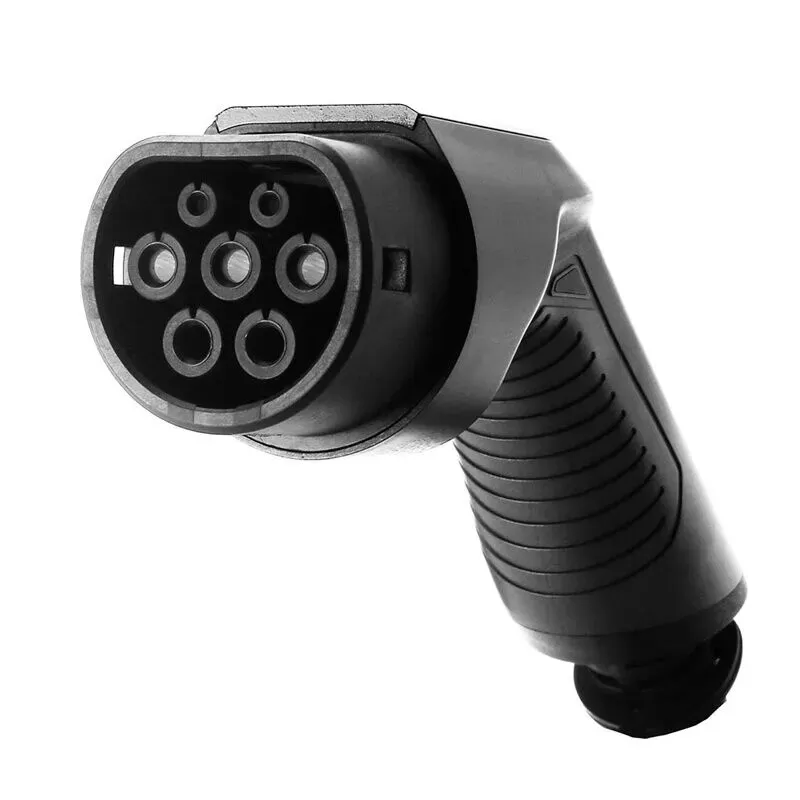Notifications

7 minutes, 17 seconds
-65 Views 0 Comments 0 Likes 0 Reviews

A Complete Guide to the Type 2 EV Connector: Europe's Standard for Efficient Charging
As a professional EV charger manufacturer in China, Topper Company provides dependable electric vehicle charging station equipment and comprehensive charging solutions.
As electric vehicles (EVs) continue to gain traction around the world, the need for standardized, efficient charging solutions has never been more critical. Among the variety of EV charging connectors available, the Type 2 connector stands out as the leading AC charging standard across Europe, Australia, and several other regions.
This comprehensive guide covers everything you need to know about the Type 2 connector — from its design and capabilities to its compatibility and comparisons with other charging types. Whether you're an EV owner, charging infrastructure provider, or simply curious about the future of electric mobility, this article delivers valuable insights into one of the most widely used EV charging solutions.
The Type 2 EV connector, also known as the Mennekes connector, is a seven-pin plug designed for alternating current (AC) charging. It has been the standard connector for public EV charging in Europe since it was mandated by the EU in 2014.
Key Features:
Seven-pin design for both single-phase and three-phase charging
Supports up to 22 kW of power, depending on the infrastructure
Automatic locking mechanism for safety during charging
Wide compatibility with most modern EVs (including Tesla in Europe)
Compared to the Type 1 (SAE J1772) connector used in North America and Japan, the Type 2 supports higher voltage and three-phase charging, offering significantly faster and more efficient charging.
The Type 2 connector is often referred to as the Mennekes connector after the German company that originally designed it. Mennekes played a crucial role in standardizing EV charging in Europe, and its design has become the foundation for most public and residential AC charging stations.
Design & Safety Features:
Durable and ergonomic for easy handling
Weatherproof construction for outdoor use
Secure locking to prevent accidental unplugging
Smart pins for communication between vehicle and charger
The Type 2 connector's biggest advantage is its flexibility and power handling, which supports faster charging across different environments. However, actual charging speed depends on several factors:
Single-phase (230V): Common in homes, delivers up to 7.4 kW
Three-phase (400V): Found in public/commercial locations, delivers up to 22 kW
Vehicle limitations also affect charging speed:
Tesla Model 3 (EU): Up to 11 kW on three-phase
Nissan Leaf: Limited to 6.6 kW (single-phase)
Porsche Taycan: Supports 22 kW with an optional upgrade
| Charging Location | Power Output | Charging Speed (Approx.) |
|---|---|---|
| Home (Single-Phase, 7.4 kW) | 7.4 kW | ~30–40 km per hour |
| Public (Three-Phase, 11 kW) | 11 kW | ~60–70 km per hour |
| Fast Public (Three-Phase, 22 kW) | 22 kW | ~120–150 km per hour |
Understanding how Type 2 compares with other major standards can help you make better charging decisions:
5-pin design, single-phase only
Max power: 7.2 kW (240V, 32A)
No automatic locking
Used in earlier EVs like the U.S. Nissan Leaf
Adds two DC pins to the Type 2 design
Supports ultra-fast charging up to 350 kW
Used by most European EVs for rapid charging
Separate DC-only connector
Used by Nissan, Mitsubishi
Gradually being phased out in favor of CCS in Europe
North America: Proprietary plug (requires adapter for J1772)
Europe: Uses Type 2 for AC, no adapter needed
If you’re based in Europe, Australia, or the UK, chances are your EV already supports Type 2 charging. To confirm:
Check the port: Type 2 ports have seven circular pins. CCS Combo 2 adds two DC pins below.
Consult your manual: Brands like BMW, Mercedes-Benz, Audi, VW, and Tesla (EU) use Type 2.
Test at public stations: If you can use public AC chargers without an adapter, it’s Type 2.
While DC fast charging technologies like CCS and Tesla Superchargers are rapidly advancing, Type 2 will remain crucial for home and workplace AC charging. Its widespread adoption and infrastructure make it a mainstay for years to come.
Potential Enhancements:
AC charging above 22 kW
Bi-directional charging (Vehicle-to-Grid or V2G)
Integration with smart grids and dynamic pricing
The Type 2 connector is a versatile, reliable, and future-ready EV charging standard. With broad compatibility, enhanced safety features, and three-phase support, it’s the preferred solution across Europe and beyond.
Whether you're investing in a home charger or planning long-distance EV travel, understanding and using the Type 2 connector ensures a seamless charging experience.
Type 2 is the European standard for AC EV charging.
Supports up to 22 kW (three-phase), ideal for faster charging.
Compatible with most modern EVs, including Tesla (EU).
Safer and more advanced than the older Type 1 connector.
Will remain key to Europe’s EV charging landscape for years.
For EV drivers, having a Type 2-compatible charger at home and ensuring your vehicle supports it are essential steps in embracing the future of electric mobility.Know more about Google SEO Directory

